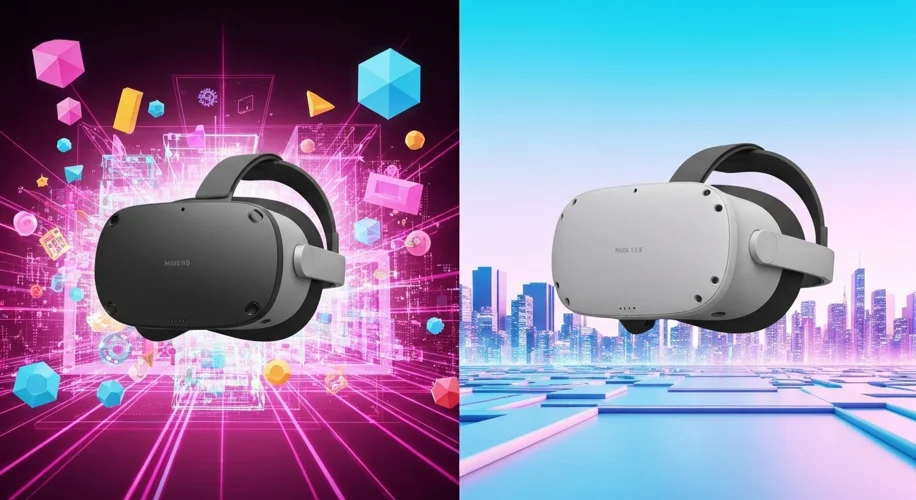Alright, so if you’ve been eyeing the VR world, chances are you’ve heard about Meta’s latest offerings. Today, August 5th, 2025, let’s break down the Meta Quest 3 and the brand new Quest 3S to help you figure out which one fits your vibe.
Quest 3: The All-Rounder
The Quest 3 is pretty much the current king of standalone VR for most people. It boasts a sharp resolution with pancake lenses, offering a really clear picture whether you’re gaming, watching movies, or exploring mixed reality. Its full-color passthrough is a big deal – you can actually see your surroundings in decent detail, making mixed-reality experiences feel much more integrated. Performance is smooth, powered by the Snapdragon XR2 Gen 2 chip, which handles demanding apps and games without breaking a sweat.
For PCVR users, the Quest 3 connects via Link cable or Air Link. Generally, you’ll want a solid gaming PC to get the most out of PCVR. Think at least an NVIDIA RTX 3070 or AMD RX 6700 XT, paired with a decent CPU and about 16GB of RAM. The setup is usually straightforward, but sometimes wireless PCVR can be a bit finicky depending on your network setup.
Quest 3S: The Budget-Conscious Contender?
Now, the Quest 3S. While Meta hasn’t officially dropped all the specs yet as of my writing, the whispers are that it’s aiming to bring the Quest 3 experience to a more accessible price point. We’re expecting it to retain a lot of the core functionality, possibly with a slightly adjusted display or chipset to hit that lower price target.
If it does follow the pattern of previous ‘S’ models, we might see a bump in refresh rate or a slightly different lens design compared to the original Quest 2, but perhaps not the full-blown mixed-reality capabilities of the Quest 3. It’s likely still going to be powered by a capable Snapdragon chip, making it a solid choice for pure VR gaming and social experiences.
Key Differences to Watch For
When comparing them, keep an eye on:
- Passthrough Quality: The Quest 3’s color passthrough is significantly better for mixed reality. The 3S might have a more basic, perhaps black-and-white, passthrough.
- Display Resolution & Lenses: Pancake lenses on the Quest 3 offer edge-to-edge clarity. The 3S might use a different lens type or slightly lower resolution to cut costs.
- Processor: While both will likely be powerful, the Quest 3 has the latest generation chip. The 3S might use a slightly older, but still capable, processor.
- Price: This is the big one. The 3S is expected to be the more affordable option.
Who Should Buy What?
- Go for the Quest 3 if: You want the best mixed-reality experience, top-tier visuals, and don’t mind paying a premium. It’s the more future-proof option for immersive experiences beyond traditional VR.
- Consider the Quest 3S if: Your primary focus is VR gaming and entertainment, and you’re on a tighter budget. If advanced mixed reality isn’t a must-have, the 3S could be your sweet spot.
Ultimately, both headsets promise great VR experiences. The choice really comes down to your budget and what features matter most to you in your virtual adventures. Let me know your thoughts in the comments below!

